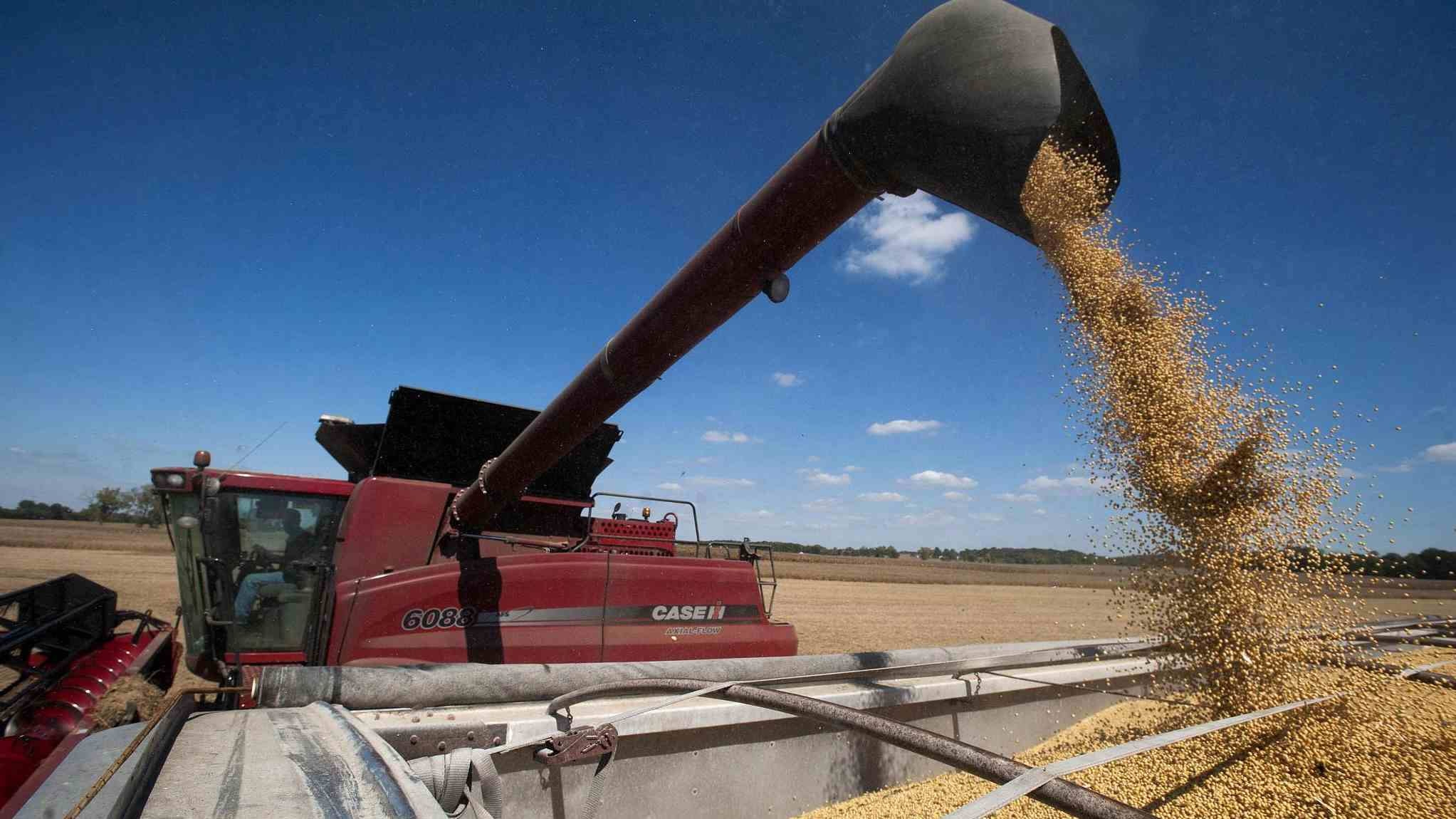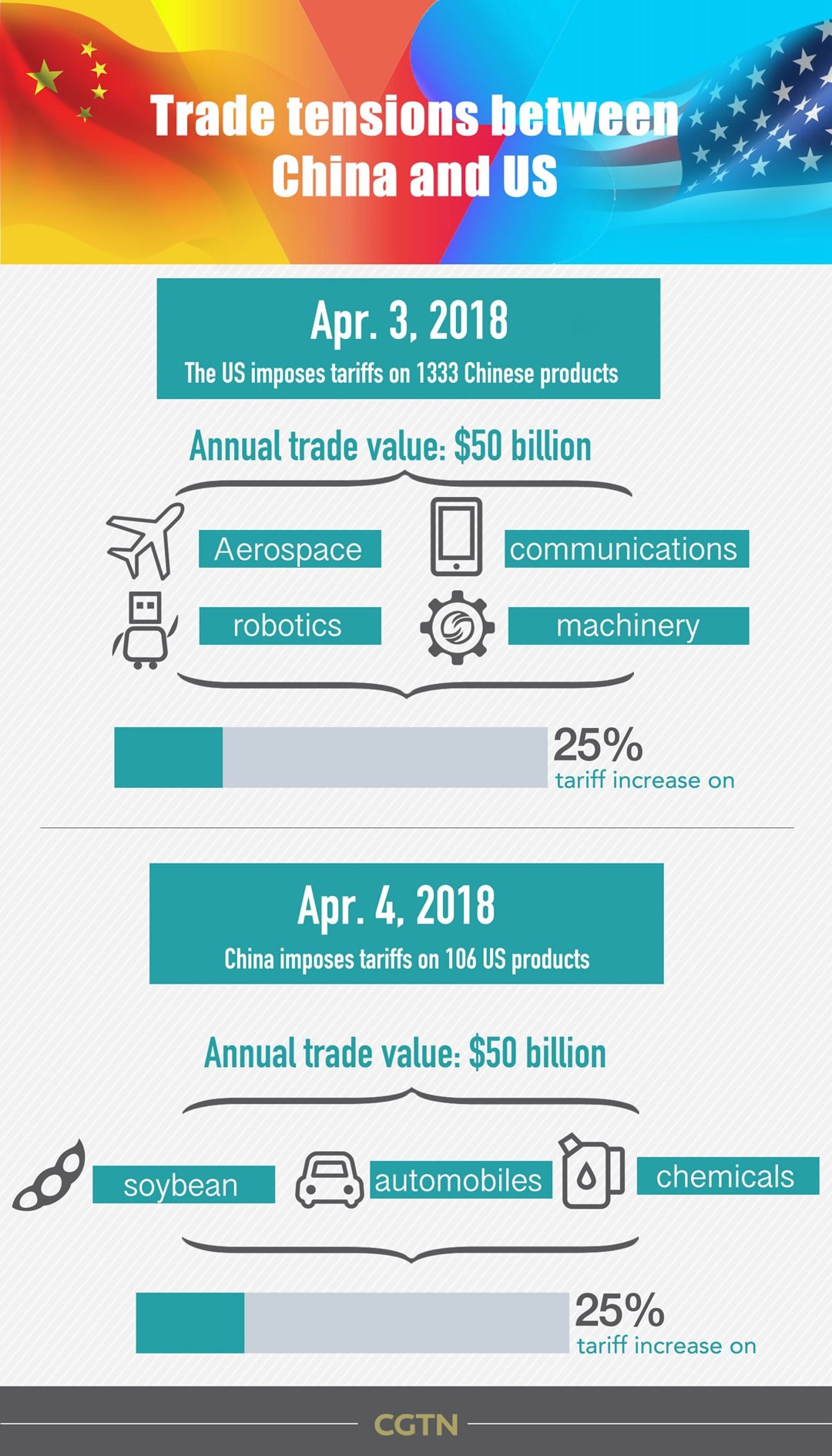
Business
15:43, 04-Apr-2018
China announces list of 106 US products in retaliatory tariffs
CGTN

China will raise 25 percent tariffs on 106 US products in 14 areas including soybeans, automobiles, and chemicals, Chinese Ministry of Finance announced on Wednesday, saying the effective date of the new tariffs will depend on when the US imposes tariffs on Chinese products.
The tariffs decision comes as a countermeasure to the US’ proposed tariffs increases on Chinese imports. The US released overnight a list where about 50 billion US dollars of 1,333 Chinese products will be subject to additional 25 percent tariffs.
“China has just announced its tariffs list involving nearly 50 billion US dollars of US imports. I have to say that China was forced to take the countermeasure and it has reacted with restraint,” Chinese Vice Commerce Minister Wang Shouwen told a press briefing.

Trade friction or war?
“China does not want a trade war which could only hurt the interests of both sides, and the prospects of the world economy,” Chinese Vice Finance Minister Zhu Guangyao said at the press briefing. He noted, “Mutual beneficiary is the essence of China-US economic relations.”
China is fighting back reluctantly.
The US’ proposed list targeted at Chinese high-tech products including software, patents and other technology. It was to allegedly bash China’s so-called coercive technology transfer practices, and “Made in China 2025.”
As China becomes a technologically pre-eminent economy, it is giving US policymakers a lot of pressure, analysts said.
“The ‘Made in China 2025’ initiative is transparent, open and non-discriminatory. We believe it complies with China’s obligations under the WTO framework. We hope to solve the disputes under the international rules of WTO,” said Wang.
“The US action is harmful to China's interests and economic safety. It threatens the recovery and stability of the global economy,” said Wang.
“China does not fear a trade war. If the US insists on fighting a trade war, China will go with it. If the US is willing to negotiate, the door is open,” said Wang.

Why soybeans top the list?
About the question whether China aims at hitting US President Donald Trump’s political base in agricultural states by topping soybeans on the list, Zhu answered, “Business is business. We should analyze the challenge we face and the way we deal with it from the perspective of the economy.”
“There are grounds for the specific items and their order on the list,” said Zhu.
The US sold 62 percent of its total exported soybeans to China, with 32.9 million tons in 2017, which accounted for 34.4 percent of China’s total imported soybeans, according to Zhu.
While the US soybean growers can benefit from that, Chinese farmers have petitioned that the US government subsidies hurt their interests, and China must respect their demands, according to Zhu.
“However, the list has not yet come into effect, and it is time for negotiation and cooperation with the prerequisite of mutual respect,” said Zhu.
Global market reactions

VCG Photo
VCG Photo
The tariffs announcement also stoked jittery trading across the globe.
There was a direct blow to agricultural commodities, with US corn and soybeans futures down by about three percent on Chicago’s agricultural market.
The S&P 500 dropped 1.6 percent in opening trade, London’s FTSE 100 fell 0.5 percent, and Hong Kong’s Hang Seng is down 2.2 percent.
Chinese yuan offshore was below 6.3 against the US dollar, off by 300 points during the day.

SITEMAP
Copyright © 2018 CGTN. Beijing ICP prepared NO.16065310-3
Copyright © 2018 CGTN. Beijing ICP prepared NO.16065310-3